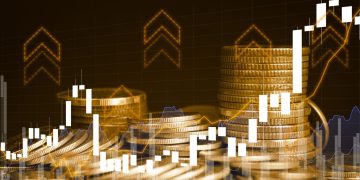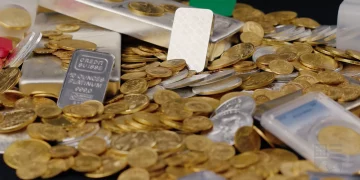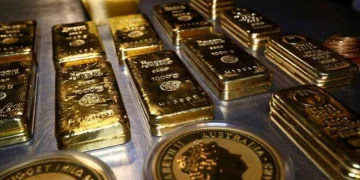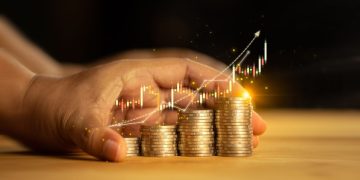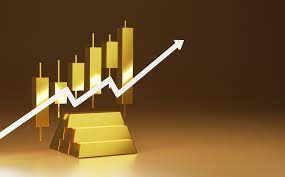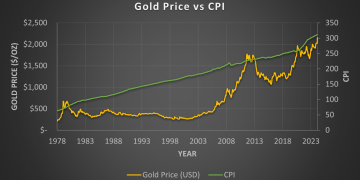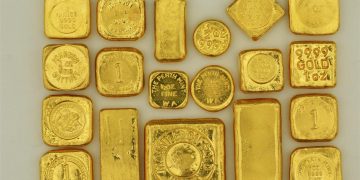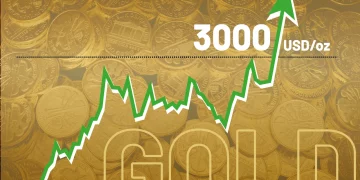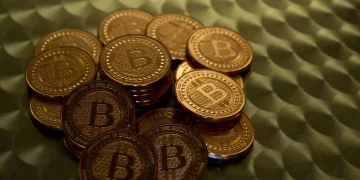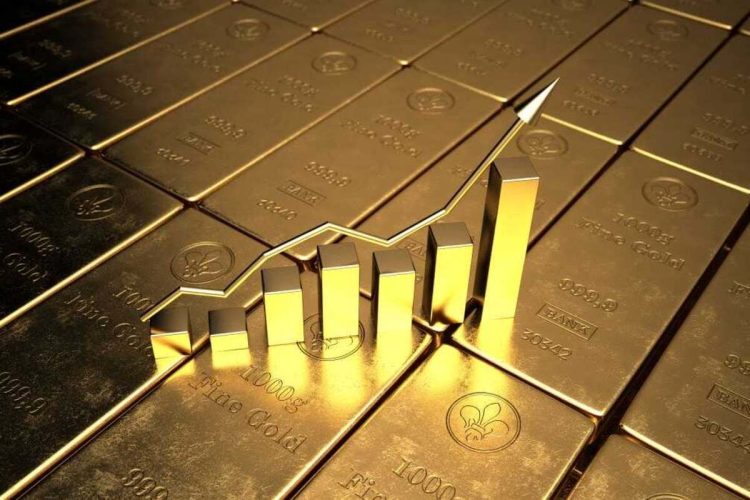Introduction: Gold’s Price Peaks—A Study of History’s Repeat
Gold has long been one of the most sought-after assets, a safe haven during times of economic instability and a store of value when fiat currencies falter. Throughout history, there have been several instances where gold prices spiked to new heights, drawing attention from investors, analysts, and the media. The gold price peaks of 1980, 2011, and 2020 remain some of the most iconic moments in the history of precious metals, each driven by a mix of global events, economic shifts, and investor sentiment.
Today, gold has once again surged to notable heights, leading many to wonder if the current market is echoing the monumental spikes seen in the past. Is the surge in 2020-2021 just a repetition of the famous 2011 rally? Or is the world dealing with a new set of circumstances that could lead to a more sustained rise in gold prices? To answer these questions, we need to examine the historical price spikes and the patterns that have emerged from past gold surges.
In this article, we’ll explore three key historical peaks in gold prices—1980, 2011, and 2020—to understand what drives these movements and whether today’s gold surge is another bubble in the making or part of a long-term trend.
Price Spikes in Gold History: 1980, 2011, 2020
- The 1980 Gold Rush: The Collapse of the Bretton Woods System The first significant price surge in gold’s history occurred in 1980, a period marked by a combination of geopolitical instability, economic recession, and high inflation. Gold reached an all-time high of $850 per ounce in January 1980—a staggering price considering that it had been trading at under $35 per ounce in the 1960s and early 1970s. The surge was largely a result of two primary factors: the collapse of the Bretton Woods system in 1971 and the 1973 oil crisis. The end of the gold standard led to the U.S. dollar becoming a free-floating currency, and inflation took hold in the U.S. economy. As a result, gold became a hedge against the weakening dollar, and its value rose rapidly. Additionally, the Iranian Revolution and the Soviet invasion of Afghanistan fueled further geopolitical tensions, causing investors to flock to gold as a safe haven. However, this gold rush was short-lived. After reaching its peak in 1980, gold prices rapidly fell, driven by a combination of strong monetary policies, interest rate hikes by central banks, and the stabilization of global oil prices. By 1982, gold had dropped back to below $400 per ounce.
- The 2011 Surge: Global Financial Crisis Aftershocks The second significant surge in gold prices occurred in 2011, when gold peaked at $1,900 per ounce in response to the aftermath of the global financial crisis (GFC) of 2008. The crisis had resulted in a massive financial system collapse, driving central banks worldwide to adopt ultra-loose monetary policies, including low interest rates and quantitative easing. Gold’s rise in 2011 was driven by the increasing concerns over the stability of the U.S. dollar and the global financial system. The debt ceiling crisis in the U.S., along with fears of a double-dip recession, contributed to a heightened sense of insecurity. Investors, seeking a safe-haven asset, turned to gold, and prices surged to record levels. However, just as in 1980, this rally was short-lived. In 2013, gold prices began to fall sharply, marking the end of the 2011 rally.
- The 2020 Surge: Pandemic-Driven Panic and Economic Uncertainty The most recent gold price surge occurred in 2020, when the COVID-19 pandemic triggered a global economic shutdown. In the midst of the pandemic, governments around the world implemented massive fiscal stimulus programs, and central banks slashed interest rates to near-zero levels to prevent economic collapse. The combination of fiscal stimulus, the devaluation of major currencies, and the economic uncertainty caused by the pandemic led to gold prices soaring past $2,000 per ounce by August 2020. Unlike previous surges, the 2020 rally was also supported by fears of inflation and a weakening U.S. dollar, driven by the unprecedented levels of government spending. The surge in gold prices also coincided with an increase in global geopolitical risks, such as the U.S.-China trade tensions and rising tensions in the Middle East. However, similar to 1980 and 2011, the surge did not last indefinitely. Gold prices began to cool off in 2021 as the global economy began to recover, and investors started to shift their focus to riskier assets like stocks and cryptocurrencies.
What’s Similar—and Different—in Today’s Market
When comparing today’s market to previous gold price surges, it’s essential to identify both the similarities and differences that could shape the future trajectory of gold prices.
- Similarities:
- Geopolitical Tensions: Similar to past gold surges, current geopolitical tensions—including trade wars, military conflicts, and political instability—continue to drive demand for gold. The ongoing tension between the U.S. and China, combined with the rise of new global power structures, makes gold a critical hedge against uncertainty.
- Monetary Policy and Inflation Concerns: As in 1980 and 2011, the aggressive monetary policies and fiscal stimulus measures implemented in response to the pandemic have contributed to fears of inflation and currency devaluation. Historically, gold has performed well in times of rising inflation, which has led many investors to once again view gold as a protective asset.
- Investor Behavior: Just as in previous years, the surge in gold prices has been driven by investors seeking safety amid uncertain times. Whether in the wake of the 2008 financial crisis or the COVID-19 pandemic, gold continues to serve as a hedge against systemic risk.
- Differences:
- Technology and Market Access: The rise of new technologies, such as AI and machine learning, has significantly altered how investors approach gold. Today, investors have access to more advanced tools for analyzing gold price movements and tracking real-time data, making it easier to react quickly to market conditions. This contrasts with previous surges, where limited access to information slowed market responses.
- Digital Alternatives and Cryptocurrency: One of the most significant differences between today’s market and previous gold surges is the rise of digital assets like Bitcoin and Ethereum. These assets have increasingly become alternatives to gold for those seeking a store of value or a hedge against inflation. While gold remains the primary safe-haven asset, cryptocurrencies now provide competition, especially among younger investors who are more comfortable with digital assets.
- Global Economic Recovery and Vaccine Rollouts: Unlike the periods of economic stagnation during the 1980s and 2010s, the 2020 surge in gold prices occurred alongside the rapid development of vaccines and global efforts to revive economic activity. The rollout of vaccines and the subsequent recovery in stock markets provided a more complex backdrop for the gold rally, as optimism about the future economy led many to reduce their holdings of precious metals.

Historical Precedents for Price Corrections
Although gold has a history of surging to new highs during periods of crisis, it is equally notorious for sharp corrections after these peaks. A critical aspect of any gold price surge is the subsequent price correction that often follows. Understanding this historical trend is crucial for investors seeking to navigate the current market.
- 1980 Correction: After the peak in 1980, gold prices plummeted by more than 50%, driven by the Federal Reserve’s tightening of monetary policy, which led to a rise in interest rates. The U.S. dollar strengthened, and inflation was brought under control, leading to a sharp decline in gold prices.
- 2011 Correction: Similarly, after reaching a high of $1,900 in 2011, gold prices faced a significant correction as investor sentiment shifted. The Federal Reserve began to taper its monetary stimulus programs, and global economic growth returned, making equities more attractive to investors.
- 2020 Correction: In 2020, gold prices surged to over $2,000 per ounce, only to correct downwards as the global economy showed signs of recovery. The rollout of COVID-19 vaccines and the easing of lockdown measures led to optimism in the equity markets, drawing investors away from gold.
Lessons for Cautious Optimism
While the historical gold surges of 1980, 2011, and 2020 all demonstrated the power of gold as a safe-haven asset during times of crisis, they also offer lessons about managing expectations in today’s market.
- Avoid FOMO (Fear of Missing Out): Gold’s surge can tempt investors to buy in at the peak, driven by the fear of missing out on further gains. However, historical trends show that gold often experiences sharp corrections after reaching new highs. Caution is key when entering a market at its peak.
- Diversify Your Portfolio: Investors should not rely solely on gold to drive returns. While gold has performed well during times of crisis, it is essential to diversify one’s portfolio to include a mix of other asset classes—such as stocks, bonds, and real estate—to mitigate risk.
- Long-Term Perspective: Gold has always been a long-term investment. Short-term price fluctuations are inevitable, and investors should focus on gold as part of a broader strategy to protect wealth rather than chasing quick profits from price swings.
Conclusion: Is This Another 2011?
While there are certainly similarities between the current gold surge and the gold price movements of 1980, 2011, and 2020, the key to navigating today’s market lies in understanding the factors that are unique to this moment in history. By taking a balanced, cautious approach to gold investing and learning from past surges, investors can better position themselves for future market shifts.













